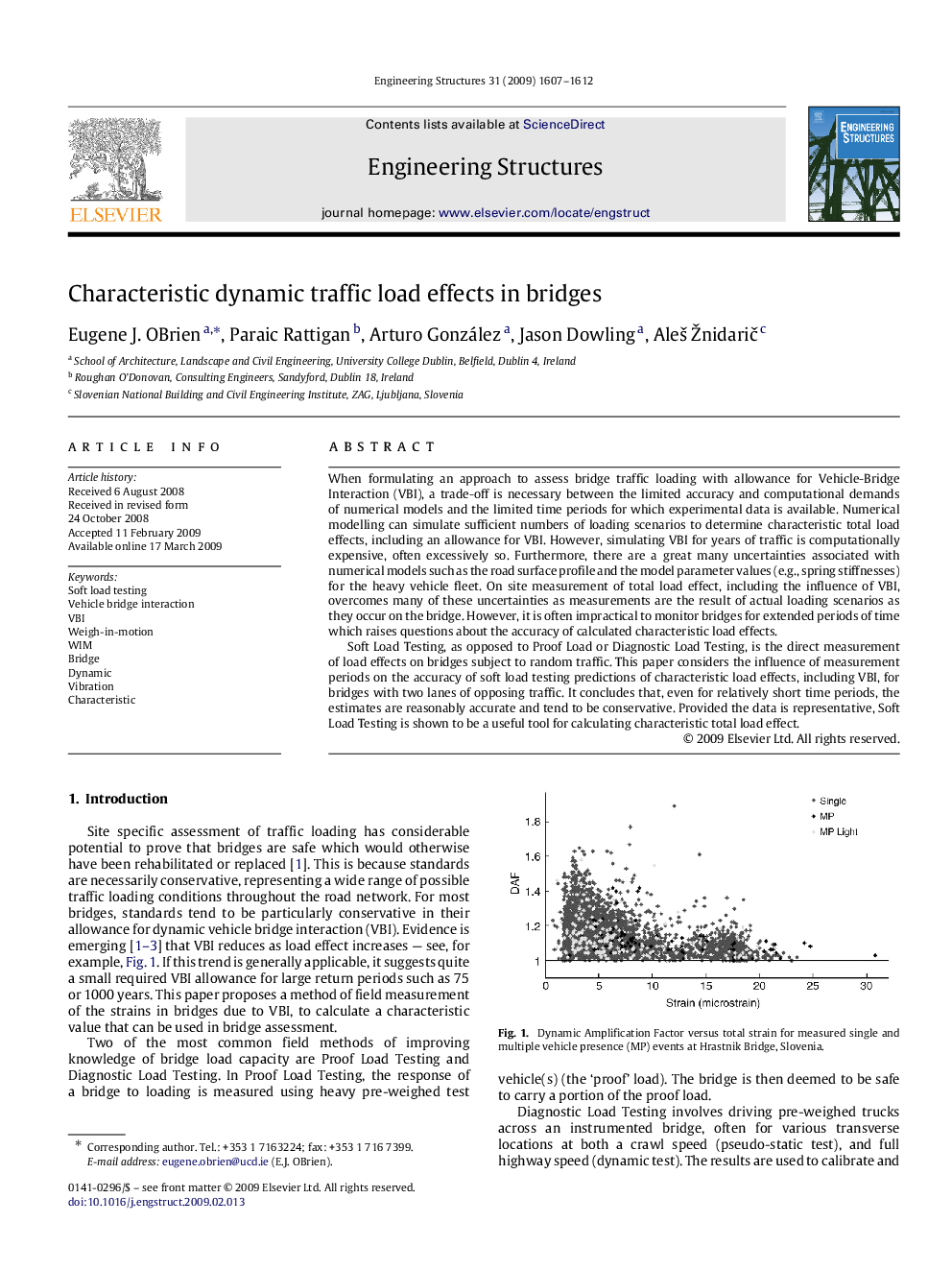| Article ID | Journal | Published Year | Pages | File Type |
|---|---|---|---|---|
| 268549 | Engineering Structures | 2009 | 6 Pages |
When formulating an approach to assess bridge traffic loading with allowance for Vehicle-Bridge Interaction (VBI), a trade-off is necessary between the limited accuracy and computational demands of numerical models and the limited time periods for which experimental data is available. Numerical modelling can simulate sufficient numbers of loading scenarios to determine characteristic total load effects, including an allowance for VBI. However, simulating VBI for years of traffic is computationally expensive, often excessively so. Furthermore, there are a great many uncertainties associated with numerical models such as the road surface profile and the model parameter values (e.g., spring stiffnesses) for the heavy vehicle fleet. On site measurement of total load effect, including the influence of VBI, overcomes many of these uncertainties as measurements are the result of actual loading scenarios as they occur on the bridge. However, it is often impractical to monitor bridges for extended periods of time which raises questions about the accuracy of calculated characteristic load effects.Soft Load Testing, as opposed to Proof Load or Diagnostic Load Testing, is the direct measurement of load effects on bridges subject to random traffic. This paper considers the influence of measurement periods on the accuracy of soft load testing predictions of characteristic load effects, including VBI, for bridges with two lanes of opposing traffic. It concludes that, even for relatively short time periods, the estimates are reasonably accurate and tend to be conservative. Provided the data is representative, Soft Load Testing is shown to be a useful tool for calculating characteristic total load effect.
